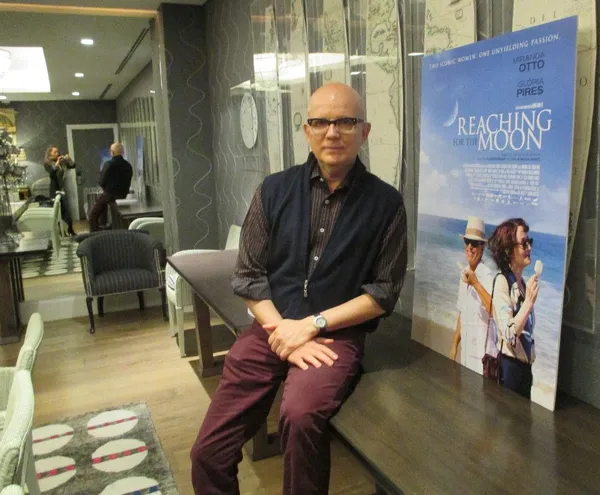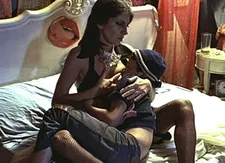 |
| Reaching for the Moon director Bruno Barreto: "Héctor’s greatest film 'Pixote'. Poetry and violence fill the screen in a ruthless way." Photo: Anne-Katrin Titze |
Héctor Babenco died on July 13, 2016. His adaptation of Manuel Puig's Kiss Of The Spider Woman, screenplay Leonard Schrader, starring Raúl Juliá, William Hurt and Sônia Braga, received four Oscar nominations - Best Picture, Best Director, Best Adapted Screenplay with Hurt winning Best Actor.
Tom Waits was in two of Babenco's films, William Kennedy's Ironweed, starring Jack Nicholson and Meryl Streep (both Oscar nominated) and the adaptation of Peter Matthiessen's At Play In The Fields Of The Lord, screenplay by Babenco, Jean-Claude Carrière and Vincent Patrick, starring Tom Berenger, John Lithgow, Daryl Hannah, Aidan Quinn and Kathy Bates.
 |
| "One of the greatest scenes in the history of cinema - Fernando Ramos da Silva (Pixote) is nursed by Marília Pêra (the prostitute) …" |
Pixote: A Lei Do Mais Fraco, screenplay Babenco and Jorge Durán, based on José Louzeiro's book The Childhood Of The Dead Ones had its premiere at New Directors/New Films in New York and won the Silver Leopard at Locarno in 1981. Nick Cave and the Bad Seeds dedicated their album Tender Prey to Fernando Ramos da Silva (Pixote) who was killed at the age of nineteen in 1987.
Héctor Babenco's final film is My Hindu Friend (Meu Amigo Hindu) starring Willem Dafoe as a director whose health is failing.
Bruno Barreto and Laurence Kardish remember Héctor Babenco:
"Friction and conflict is the quickest way to create intimacy. Héctor Babenco swore by it. And that’s what he avidly pursued with his films - to create total intimacy with the audience. One of the greatest scenes in the history of cinema, in my opinion, is the one in which Fernando Ramos da Silva (Pixote) is nursed by Marília Pêra (the prostitute) in Héctor’s greatest film 'Pixote'. Poetry and violence fill the screen in a ruthless way." - Bruno Barreto, director of Reaching For The Moon and Dona Flor And Her Two Husbands.
 |
| Laurence Kardish on Héctor Babenco: "He was a singular man and an inspired filmmaker." |
"Never judge a director's personality from his/her film. That was the lesson I learned when I met Héctor Babenco in May 1981 after he arrived at MoMA to close New Directors/New Films with the film that made him famous, Pixote. I had seen Pixote, about the short brutal lives of street kids in São Paulo, a few months earlier and stunned by its powerful realism, its over-the-edge scenes of cruelty, and its passionate anger, I assumed its maker was a tough social crusader, an activist rebel. Well, the man who showed up to talk about his film was not the fellow I imagined.
"Héctor was a mild-mannered, low keyed kind of guy, seemingly bemused and bewildered by both the critical accolades and breathless audience response to his film with scenes of children doing things that had not been seen before on American screens. He seemed to be unaware of how disturbing his film was, because, after all that's the way it was in the Brazilian metropolis. Articulate, approachable, charming, thoughtful and curious Héctor proved not the hyperbolic radical but an empathetic gentleman at once serious and relaxed. He was cool.
"We struck up an acquaintance, more fellowship than friendship, and we enjoyed seeing each other briefly at festivals where the next extraordinary films played and at New York screenings where Babenco always extended an invitation. He was a singular man and an inspired filmmaker." - Laurence Kardish, former Museum of Modern Art Senior Curator for Film and New Directors/New Films programmer.





















